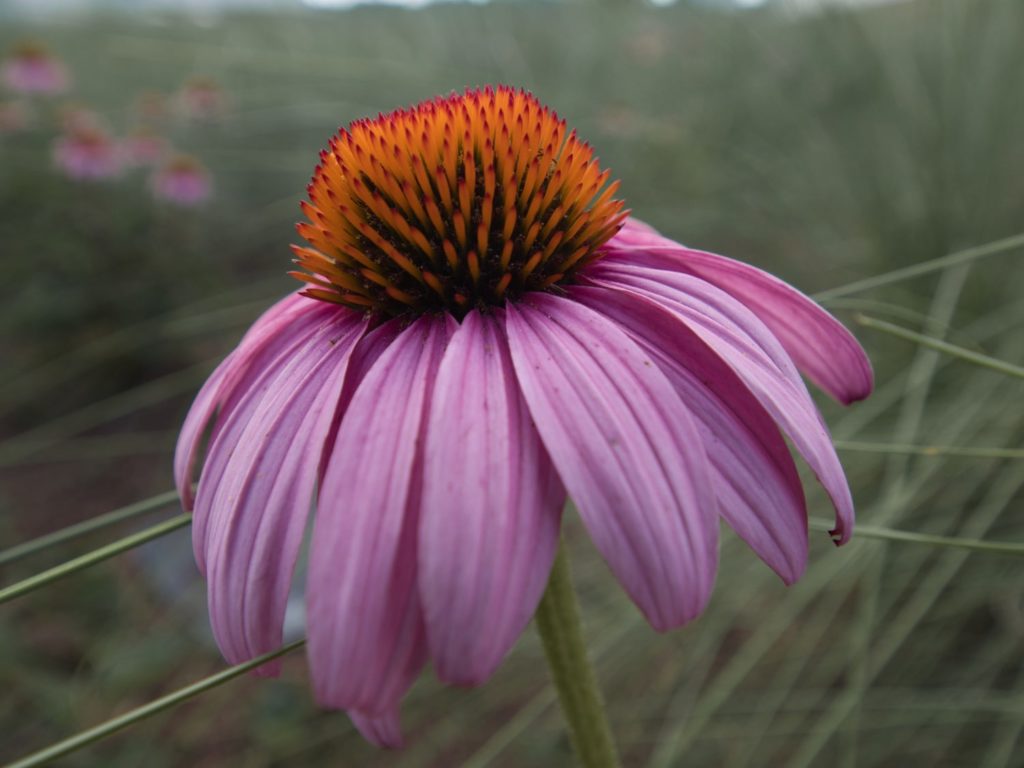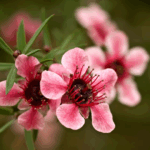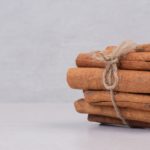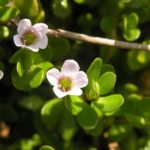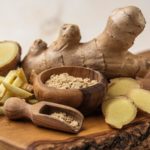
Tracy de Souza
BNatMed (Bachelor of Natural Medicine), NMHNZ (Naturopaths & Medical Herbalists New Zealand)
Jump to:
Historically, echinacea was used to treat
- Infections
- Colic
- Wounds
and many other conditions from the 1800s to the 20th century. It was also prescribed as a popular anti-infective medication until antibiotics became the standard medical practice.
In this article, we will look more closely into the history of echinacea, its use and potential health benefits.
Introduction
Echinacea is a well-known and easily cultivated medicinal herb predominately used throughout North America. The Native American Sioux Indians first introduced it to the settlers.[1]
Traditionally, the root was mainly used by the Native American tribes and eclectics, whilst, in Germany, aerial parts of E. purpurea became a popular remedy during the 1930s, alongside using the whole plant in a fresh tincture.[2]
Other names
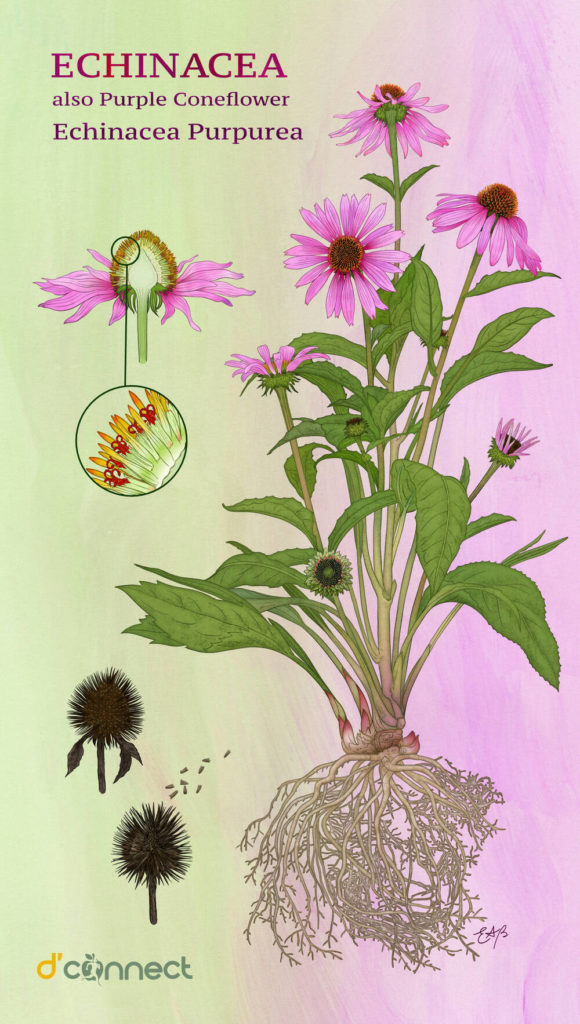
Botanical name: E. purpurea, E. pallida and E. angustifolia.
Common name: Echinacea.
Family: Asteraceae.
Other names: American coneflower, coneflower, purple coneflower, black Sampson, Kansas snakeroot, Indian head, Rudbeckia pallida Nutt.[1,3]
Greek derivative: Echinos meaning sea urchin or hedgehog, a resemblance of the dried flower head of prickly scales.[4,5]
Characteristics
Out of the nine different species, only three are currently used medicinally, and these are E. purpurea, E. pallida and E. angustifolia.
Echinacea is a tall, vigorous perennial plant belonging to the Asteraceae (daisy) family. Growing in prairies that vary from dry to wet regions.[3]
Echinacea produces rosette leaves during the first year of growth, blooming in the second year. The stem of an echinacea has rough bristle hairs and reddish-brown patches, while the leaves are egg-shaped, large, and serrated.[2,3]
Mature flower heads are cone-shaped, dropping, and spikey, ranging from white, pink, purple, and pale red to deep red florets.[2,3,5]
Several key active constituents:
- Polysaccharides
- Alkylamides
- Caffeic acid derivatives
- Flavonoids
- Essential oils
- Polyacetylenes
have a role in the antiviral, anti-inflammatory, and antibacterial activity.
The growing process must be done correctly, harvested at the correct time, and dried immediately. Echinacea must be gathered at the exact time to ensure active compound levels are maximised during harvesting.
Drying occurs immediately after harvest to reduce the risk of degrading bioactive substances; up to 80% of cichoric acid and alkylamides constituents can be lost.[3,5]
Use
Echinacea is widely used to prevent and treat upper respiratory tract infections such as the common cold due to its immunomodulating and immune enhancing effects.[6,7]
Traditional Use
Echinacea was commonly used by Native Americans for illnesses. The root was used externally for:
- wound healing
- insect bites
- abscesses
- burns
- infections
- toothache
- rattlesnake bites
- joint pain
German healer H. C. F. Meyer introduced a commercial echinacea product to Americans known as Meyers blood purifier, a cure for snakebites, typhus, and diphtheria in the 1870s.[3]
Eclectics externally used echinacea as a stimulant, antiseptic, aesthetic, and deodorant. Internally, it was used for bad blood, such as sepsis, syphilis, scarlet fever, septic wounds, dysentery, and cancer.[2,3]
Medicinal Use
Echinacea exhibits multiple actions, including:
- antimicrobial
- anti-inflammatory
- antiviral
- antibacterial
- antioxidant
- antifungal
- antiparasitic
- depurative (aids in detoxification)
- lymphatic
- vulnerary (heal wounds)
- vasodilator (dilate blood vessels)
- mosquitocidal[1,4,6,8]
Whilst this herb is an immunomodulator and immune enhancing, it has also been indicated for gastrointestinal conditions and urinary tract infections.
Echinacea is considered to be immune enhancing
Studies show that it may be helpful for skin conditions, infections (Herpes simplex virus) and dental conditions such as halitosis (oral malodour).[9]
Nutritional facts
Echinacea is high in antioxidants; the nutritional constituents consist of:
- Vitamin A
- Vitamin C (immunity and collagen booster)
- Vitamin E
- Selenium
- Iron (for immunity support and energy production)
- Iodine
- Copper: Heart, Hair and Skin Health
- Potassium (for blood pressure, heart rhythm and pH balance)
- Sulphur
- Manganese
- Calcium (for healthy bones, teeth and heart)
- Zinc (for immunity, skin health and libido)
Echinacea also contains high levels of beta-carotene and flavonoids.[4,10]
Health benefits
Echinacea is one of the most popular natural herbs consumed worldwide. It has primarily been used for the prevention and treatment of upper respiratory illnesses.
Echinacea as an immunomodulator and anti-inflammatory
Echinacea enhances and modulates the immune system’s ability to respond effectively to harmful pathogens. It stimulates natural killer cell (NK) activity, increases cytokines, and increases both innate and adaptive immunity.[11]
Alkylamides containing tetraene have a significant role in echinacea’s immunomodulatory and anti-inflammatory properties.
A pilot study involving ten healthy adults administered an echinacea angustifolia lipophilic extract and observed its immunological and anti-inflammatory effects.[12]
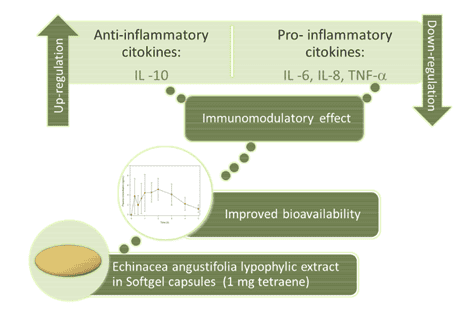
The researchers noted an increase in anti-inflammatory cytokines, and a decrease in proinflammatory cytokines that are responsible for systemic inflammation.[12]
Echinacea viral actions
Studies have shown that echinacea exhibits large virucidal properties against
- HSV-1 and HSV-2 (herpes complex virus)
- HIV-1 immunodeficiency virus type 1
- SARS-CoV-2
- Influenza[13,14,15]
A recent study involving virus infections in children aged between 4 and 12 years compared echinacea to vitamin C over a four-month period.
Virus concentrations in nasopharyngeal samples collected represent RNA numbers. CT values demonstrated RNA levels; a higher CT level reduced viral load.[14]
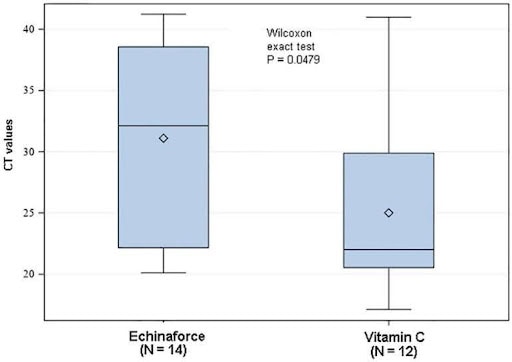
Echinacea antioxidant actions
Antioxidant activity in echinacea is due to free radical scavenging. It aids in
- skin injury
- prevents and delays skin ageing
- improves skin hydration
and acts as a preservative and protective against cardiovascular disease and cancer.[16]
In cosmeceutical studies, caffeic acid derivatives have been found to exhibit robust and strong beneficial effects on skin health, particularly in protecting against oxidation.
Echinacea extracts are shown below regarding antioxidant activities.
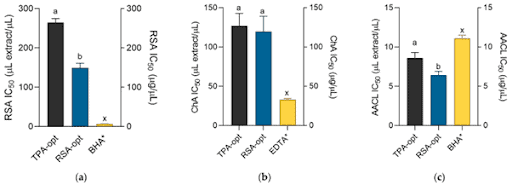
Caffeic acid derivatives contain potent antioxidant, phenolic acid, and antiradical activity.[16]
Echinacea’s antifungal and antimicrobial actions
Bioactive compounds exert antifungal and antimicrobial effects against fungi. Hexane extracts within echinacea have proven to inhibit yeast strain growth.[1]
Antimicrobial activity has been shown to disrupt fungal cell walls due to the echinacosides’ actions against infections such as Staphylococcus aureus, Escherichia coli, and Pseudomonas aeruginosa.[2]
This study explored the antifungal properties of echinacea, a plant commonly used to treat infections such as candidiasis.
Echinacea is a potent herb to treat Candida
Saccharomyces cerevisiae and Cryptococcus neoformans fungal strains were treated against E. purpurea root extract to assess disruption of fungal cell walls.[17]

Echinacea’s interference with fungal cell walls is a key aspect of its antifungal properties. The extract consistently showed a higher frequency of disrupted cell lesions, indicating compromised yeast cell walls when exposed to echinacea.
Echinacea extracts tested had antifungal activity against S. cerevisiae S288C.[17]
Echinacea and myocardial infarction
In a rat study, Avemar and echinacea extracts induced the mobilisation of CD34+ stem cells of myocardial tissue.
Pre- and post-treatment with Avemar and echinacea effectively induced mobilisation of CD34+ at day 1 and day 14.[18]
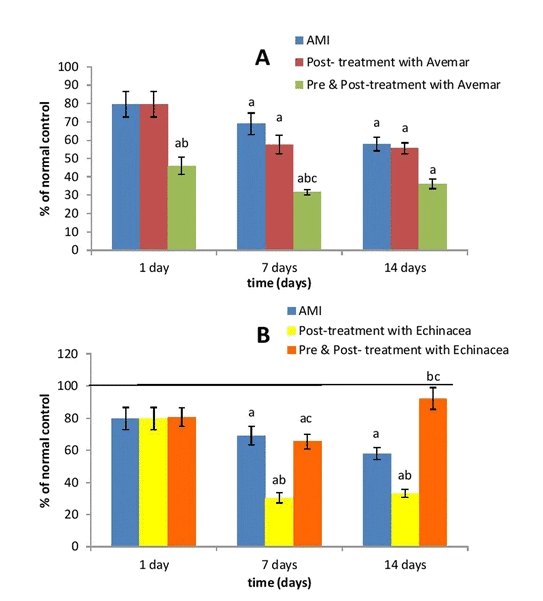
Echinacea significantly decreased serum GM-CSF levels on days 7 and 14.
On days 1 and 14, pre- and post-treatment of echinacea did not influence serum GM-CSF levels; however, on day 14, there was a significant increase of 159% compared to the AMI (acute myocardial infarction).[18]
The reason why this is important is because activation of endogenous stem cell mobilisation can contribute to myocardial regeneration after ischemic injury.
Therapeutic dosage
Echinacea can be taken internally and externally.
Internally:
- Tea
- Juice
- Tincture
- Decoction
- Fluid extract
Externally:
- Creams
- Ointments
- Lotions[3,4]
Safe dosage:
- Tea infusion/decoction 0.5-1 g three times a day
- Tincture 1:5 1-2 ml three times a day[4]
- Fluid extract 1:1 1-2 ml three times a day[3]
Acute treatment for upper respiratory infections is 7-10 days, starting at the first sign of infection.[1]
Chronic conditions treatment from German Commission E recommended up to eight weeks. However, in a 2001 study, echinacea was taken orally for up to six months with no detrimental side effects.[1,4]
Safety concerns
Echinacea is a safe herb; side effects are uncommon and usually consist of minor gastrointestinal complaints, increased urination, and mild allergic reactions.[1,4]
Allergic reactions are usually reported by people who are allergic to the Asteraceae family; avoid if allergic to the Asteraceae family.[1,4]
Echinacea is contraindicated in people with autoimmune disorders such as:
- Multiple sclerosis
- Systemic lupus
- Erythematosus
- Rheumatoid arthritis
- Tuberculosis
- Leucocytosis[1,3]
Echinacea is safe for asthmatics, pregnancy, and lactation.[1,2,3]
Possible interactions with medications
Echinacea may interfere with drugs that suppress the immune system, such as cyclosporine, by increasing the immunostimulatory effect of cyclophosphamide (a chemotherapy medication).[1,3]
One study reported a possible interaction between echinacea, cisplatin, and etoposide (a chemotherapy medication). This interaction resulted in thrombocytopenia (low platelet count), and a platelet transfusion was necessary, suggesting that the CYP3A4 enzyme was inhibited.
However, various clinical research shows no reaction to the CYP3A4 enzyme in human studies.[1]
Another study has theoretically suggested that echinacea use between cycles of myelosuppressive (bone marrow suppression) chemotherapy may increase white blood count while under professional supervision, improving patients’ quality of life.
Possible interactions with herbs and supplements
Echinacea is typically a safe herb; no interactions have been reported with herbs or supplements.
Summary
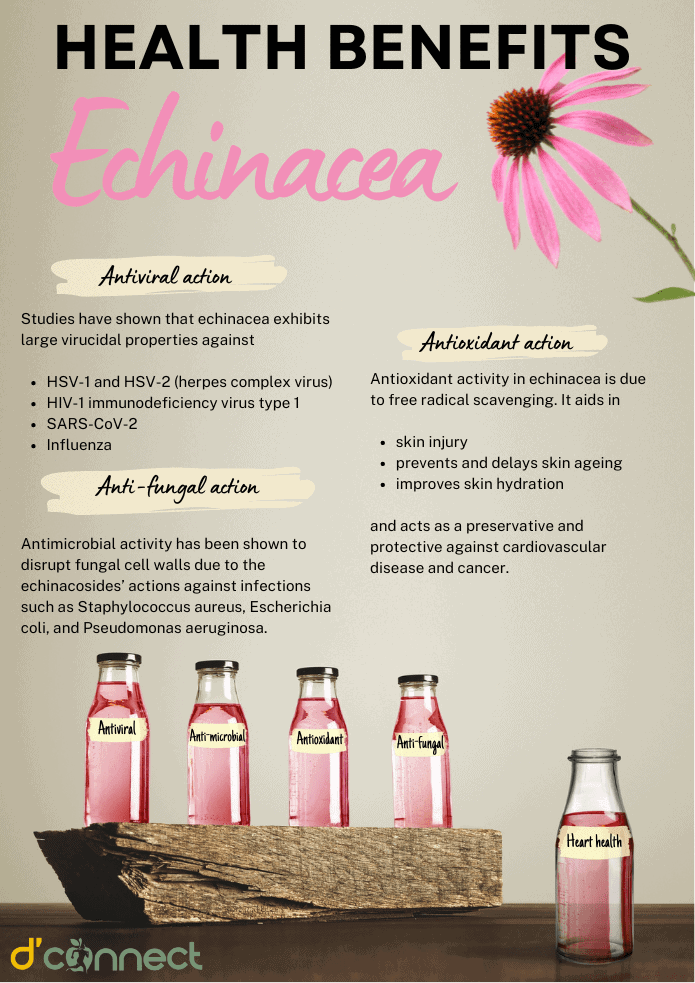
Note — feel free to share or download this illustration.
Related Questions
1. What foods/supplements should be avoided when taking echinacea?
Echinacea is a generally safe herb.
There is no evidence suggesting that food or supplements require avoidance. Current studies indicate that the risk is low.
2. Is echinacea safe for anyone to take?
For most people, yes.
However, if you have an autoimmune condition or are allergic to the Asteraceae (daisy) family, avoid using echinacea. For further advice, speak with your naturopath.
3. How long can I take echinacea for?
For acute cases, it can be taken at the first sign of infection for 7-10 days.
For chronic conditions, echinacea can be taken up to eight weeks.
4. Can echinacea be used as an adjunct to cancer treatment?
Yes. Many studies have indicated that echinacea has a stimulatory effect. It is effective alongside cancer and radiation treatment.
Inform your oncologist and seek further advice from your naturopath.
5. What else can echinacea be used for?
Echinacea can be used as a treatment option for halitosis (bad breath) as it reduces malodour and volatile sulphur compounds.
For similar articles, please see our Herbs section.
Tracy is a degree-qualified naturopath and medical herbalist. She completed her degree from the South Pacific College of Natural Medicine in Auckland in 2023 and is a member of the Naturopaths & Medical Herbalists NZ.
References
(1) Braun, L., & Cohen, M. (2015). Herbs & natural supplements: An evidence-based guide (4th ed. Vols. 1-2). Churchill Livingstone Elsevier.
(2) Bone, K., & Mills, S. (2013). Principles and practice of phytotherapy (2nd ed.). Edinburgh, Scotland: Churchill Livingstone Elsevier.
(3) Murray, M.T. (2013). Echinacea species (narrow-leafed purple coneflower). In J. E. Pizzorno & M. T. Murray, Textbook of natural medicine (4th ed., pp. 718-726). St Louis, MO: Elsevier.
(4) Fisher, C. (2009). Materia medica of western herbs. Vitex Medica.
(5) Burlou-Nagy, C., Bănică, F., Jurca, T., Vicaș, L. G., Marian, E., Muresan, M. E., Bácskay, I., Kiss, R., Fehér, P., & Pallag, A. (2022). Echinacea purpurea (L.) Moench: Biological and pharmacological properties. A review. Plants (Basel, Switzerland), 11(9), 1244. https://doi.org/10.3390/plants11091244
(6) Bone, K. (2007). The ultimate herbal compendium. A desktop guide for herbal prescribers. Warwick, QLD. Phytotherapy Press.
(7) Karsch-Völk, M., Barrett, B., Kiefer, D., Bauer, R., Ardjomand-Woelkart, K., & Linde, K. (2014). Echinacea for preventing and treating the common cold. The cochrane database of systematic reviews, 2014(2), CD000530. https://doi.org/10.1002/14651858.CD000530.pub3
(8) Manayi, A., Vazirian, M., & Saeidnia, S. (2015). Echinacea purpurea: Pharmacology, phytochemistry and analysis methods. Pharmacognosy reviews, 9(17), 63–72.
(9) Hudson J. B. (2012). Applications of the phytomedicine Echinacea purpurea (purple coneflower) in infectious diseases. Journal of biomedicine & biotechnology, 2012, 769896. https://doi.org/10.1155/2012/769896
(10) Momchev, P., Ciganović, P., Jug, M., Marguí, E., Jablan, J., & Zovko Končić, M. (2020). Comparison of maceration and ultrasonication for green extraction of phenolic acids from Echinacea purpurea aerial parts. Molecules (Basel, Switzerland), 25(21), 5142. https://doi.org/10.3390/molecules25215142
(11) Catanzaro, M., Corsini, E., Rosini, M., Racchi, M., & Lanni, C. (2018). Immunomodulators inspired by nature: A review on curcumin and echinacea. Molecules (Basel, Switzerland), 23(11), 2778. https://doi.org/10.3390/molecules23112778
(12) Dall’Acqua, S., Perissutti, B., Grabnar, I., Farra, R., Comar, M., Agostinis, C., Caristi, G., Golob, S., & Voinovich, D. (n.d.). Pharmacokinetics and immunomodulatory effect of lipophilic echinacea extract formulated in softgel capsules. Department of chemical and pharmaceutical sciences. https://core.ac.uk/reader/53748220
(13) Hudson, J., & Vimalanathan, S. (2011). Echinacea—A source of potent antivirals for respiratory virus infections. Pharmaceuticals, 4(7), 1019–1031. https://doi.org/10.3390/ph4071019
(14) Nicolussi, S., Ardjomand-Woelkart, K., Stange, R., Gancitano, G., Klein, P., & Ogal, M. (2022). Echinacea as a potential orce against coronavirus infections? A mini-review of randomized controlled trials in adults and children. Microorganisms, 10(2), 211. https://doi.org/10.3390/microorganisms10020211
(15) Jubayer. M.F., Malek, M.A., Iqram, T., Begum, M., Kayshar, S., Arifin, S., Limon, T. I., Das, P. D., Mazumder, A. R., Akter, M., Uddi, J., & Rahman, M. (2024). Therapeutic potential of selective medicinal plants and their phytoconstituents in respiratory diseases: A review with an emphasis on COVID-19. Jabet advanced biotechnologies and experimental therapies, 7(1), 205-220. https://doi.org/10.5455/jabet.2024.d18
(16) Ciganović, P., Jakupović, L., Momchev, P., Nižić Nodilo, L., Hafner, A., & Zovko Končić, M. (2023). Extraction optimization, antioxidant, cosmeceutical and wound healing potential of echinacea purpurea glycerolic extracts. Molecules, 28(3), 1177. https://doi.org/10.3390/molecules28031177
(17) Mir-Rashed, N., Cruz, I., Jessulat, M., Golshani, A., Arnason, J. T., & Smith, M. L. (2010). Disruption of fungal cell wall by antifungal echinacea extracts. Medical Mycology, 48(7), 949–958. https://doi.org/10.3109/13693781003767584
(18) Abdelmonem, M., Kassem, S.H., Gabr, H., Shaheen, A. A., & Aboushousha, T. (2015). Avemar and echinacea extracts enhance mobilization and homing of CD34+ stem cells in rats with acute myocardial infarction. Stem cell research & therapy, 6(172), 1-17. https://doi.org/10.1186/s13287-015-0171-5

